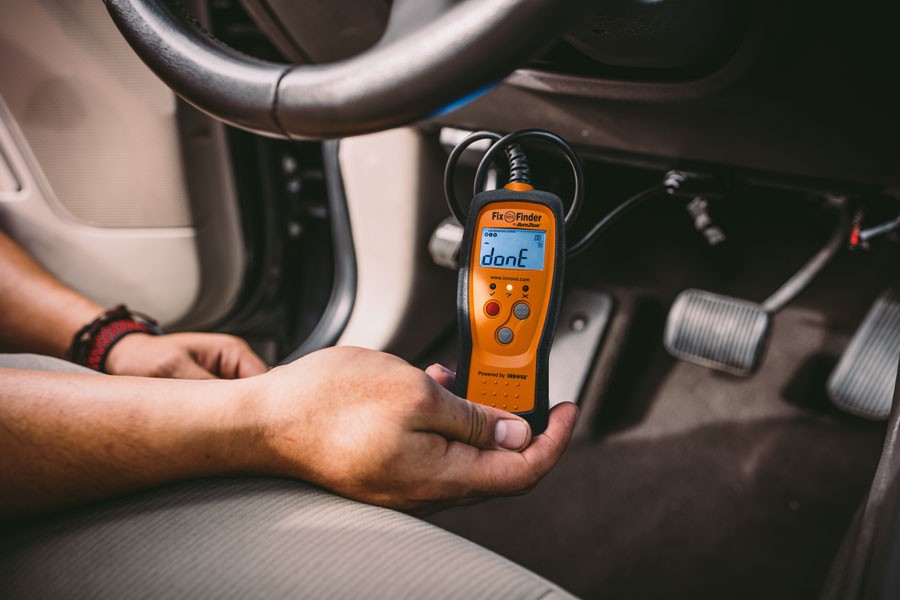Connecting an OBD2 scanner is a simple process, but a common question is whether the car needs to be running for it to work. In most cases, no, your car does not have to be running to use an OBD2 scanner. You can usually read trouble codes with the ignition switched to the “ON” position, often labeled as “ACC” or “Run”. This powers up the OBD2 port and allows the scanner to communicate with the vehicle’s computer without the engine running.
How to Connect and Use an OBD2 Scanner
The OBD2 port, a trapezoid-shaped 16-pin connector, is typically located under the driver’s side dashboard. Sometimes, it might be hidden in the center console or under the passenger side. Connecting the scanner is straightforward:
- Ensure the ignition is OFF. This important first step prevents potential electrical issues.
- Connect the OBD2 scanner to the diagnostic port. The connector only fits one way, so align it and push firmly.
- Turn the ignition to the ON position without starting the engine. This powers the scanner.
- Wait for the scanner to boot up. The scanner will initialize and may ask for vehicle information like the VIN.
Understanding OBD2 Scanner Menus and Codes
Once the scanner is ready, you’ll see a menu with options like:
- Read Codes: Displays diagnostic trouble codes (DTCs) indicating potential issues.
- Erase Codes: Clears stored DTCs after repairs. Caution: Erasing codes can temporarily affect vehicle performance and should only be done after fixing the problem.
- Live Data: Shows real-time sensor readings, useful for diagnosing ongoing problems.
- Freeze Frame: Captures vehicle data at the moment a DTC was set.
After selecting “Read Codes,” you’ll see codes like “P0301”. Each code represents a specific problem. The first letter signifies the system (P for Powertrain, B for Body, C for Chassis, U for Network). The following numbers provide more details. For example, P0301 indicates a misfire in cylinder 1.
Why Use an OBD2 Scanner With the Engine Off?
Using the scanner with the engine off offers several benefits:
- Safety: Prevents accidental mishaps while working under the hood.
- Diagnostics: Allows for a clear reading of stored codes without interference from a running engine.
- Battery drain prevention: Running the engine unnecessarily consumes fuel and can drain the battery if the diagnostic process takes a while.
When Might the Engine Need to Be Running?
While rare, some advanced functions might require a running engine:
- Specific Live Data: Certain sensors or systems might only provide data when the engine is running and under load.
- Bi-directional Tests: Some scanners can command certain components, which may require the engine to be on. Consult your scanner’s manual for specific instructions.
Conclusion: Engine Off is Usually Sufficient
For most OBD2 scanner tasks, like reading and clearing codes, the engine does not need to be running. Turning the ignition to the “ON” position provides sufficient power. However, always refer to your specific scanner’s instructions for optimal use and to avoid potential damage to your vehicle or the scanner itself. Understanding how to use an OBD2 scanner empowers you to diagnose car problems and potentially save on repair costs.
